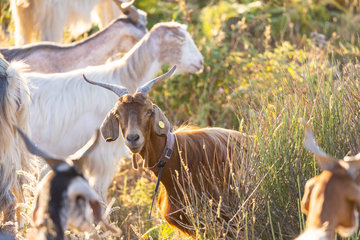Early life adversity leaves long-term signatures in baboon DNA
Study shows multiple pathways connect early life adversity to later life health
Early experiences in an animal’s life can have a significant impact on its capacity to thrive, even years or decades later, and DNA methylation may help record their effects. In a study of 256 wild baboons, researchers from the Max Planck Institute for Evolutionary Anthropology and Duke University found that resource limitation during early life was associated with many differences in DNA methylation, a small chemical mark on the DNA sequence that can affect gene activity. Resource limitation was more important than other types of early environmental stressors, suggesting the particular importance of resource deprivation in the first years of life. However, the researchers also suggest that aspects of the environment at the time of sampling, such as social status, may be more important in explaining differences in DNA methylation between individuals, indicating that multiple pathways must connect early life effects on later life outcomes.

Adverse environmental conditions, especially early in life, can have long-term effects on an animal’s health and survival. For example, in rhesus monkeys, infants who are separated from their mothers soon after birth, are more susceptible to disease later in life. The idea that such differences arise from long-term changes in the animal’s biology is called "biological embedding." Changes in DNA methylation, an "epigenetic“ modification of the DNA sequence, have been proposed to contribute to biological embedding, particularly because these changes can be stable and affect gene activity, and potentially other traits. However, studies of early life adversity and DNA methylation in wild mammals are limited.
To investigate the associations between DNA methylation and early life adversity, an international team of researchers from the Max Planck Institute for Evolutionary Anthropology and Duke University studied a population of wild baboons in Kenya. "Our study included 256 baboons – 115 males and 141 females – and we combined DNA methylation data with ecological, behavioral, and life history data collected over the more than 50 years of this study site’s history,“ says first author Jordan Anderson, a PhD researcher at Duke University. "This population was a good candidate for analysis because we already know that female baboons who experience a lot of early life adversity have elevated stress hormone levels in adulthood, weaker social bonds, and lower offspring survival.“
Early life resource deprivation can affect health across generations

Surprisingly, the study showed that the loss of a mother was not strongly associated with variation in DNA methylation – nor was early life social status or social isolation. Instead, the clearest results came from looking at drought and poor habitat quality, which limit the availability of food for the baboons. The researchers also found that multiple exposures to early adversity left particularly strong signatures. "Exposure to repeated early life adversity seems to have compounding effects on DNA methylation. For example, for those born into poor early life habitats, the impact of drought is greater,“ says senior author and project leader Jenny Tung, director of the Department of Primate Behavior and Evolution at the Max Planck Institute for Evolutionary Anthropology. "This may be because different types of adversity can work through similar mechanisms, like affecting how much they have to eat.“
The authors emphasize that the importance of also examining whether, as predicted by biological embedding, differences in DNA methylation also affect gene activity. „We have taken a step in this direction by using genomic approaches to test whether DNA methylation can influence gene expression in isolated cells, but much more research is needed to understand how early life adversity influences animal physiology, health, and survival, including, but not limited to, its effects on DNA methylation,“ says Tung.













